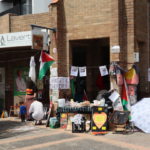AVOs May Soon Apply Across Australia

Government initiatives have so far failed to stamp-out the epidemic of domestic violence in Australia.
Last week, NSW Attorney-General Gabrielle Upton appealed to all states and territories to follow NSW in tracking the movement of domestic violence offenders to other states.
Under current laws, if a victim of domestic violence wants an Apprehended Domestic Violence Order (ADVO) to apply in another state or territory, he or she needs to re-apply for an order in that jurisdiction. But under the model proposed by MS Upton, once an ADVO is made in one jurisdiction, it will automatically operate across Australia. This national scheme seeks to ensure better communication between law enforcement agencies and protect victims who move interstate.
The proposed change reflects the rhetoric of government leaders;
“Domestic violence has been overlooked, to some extent ignored, for far too long. We must have zero tolerance for it,” Prime Minister Turnbull has said, branding the issue a “national disgrace.”
“There is a plague in our state that we need to eradicate and that is domestic violence and sexual assault,” Premier Mike Baird has similarly commented.
There is no doubt that change is needed. Australian police deal with an estimated 657 domestic violence matters every day. That’s one every two minutes, which means a domestic violence matter is statistically likely to have occurred while you have been reading this article. In total, one in six Australian women have experienced physical or sexual violence from a current or former partner.
Interaction Between Government Influences
It is important to note, though, that while the above proposal appears to be a positive one, the change will be stifled somewhat if legal funding for domestic violence continues to be inadequate.
We can’t expect to address the family violence crisis without fully funding the services which men and women rely on to escape abuse. While the improvement in DVO processes are welcomed by victims’ groups, if victims are not able to access legal advice or information, they are unlikely to obtain the benefits of any Court-issued protections.
As discuss in a previous blog article, while ADVOs may be initiated by police, many people fleeing violent relationships will apply for a private ADVO. In these circumstances, the chance of a successful application is bolstered by legal assistance, with the involvement of lawyers easing this stressful and difficult process.
Government Funding Commitment
It is important to note that these and other legislative changes have reflected Malcolm Turnbull’s stated commitment to addressing the problem of domestic violence in Australia, and he has announced $100 million in federal government funding to tackle the issue.
The government’s package includes funding to trial GPS trackers for perpetrators, special safe phones for victims and CCTV cameras to boost security. T
here is also additional funding to address violence in Indigenous communities, as well as for 1800 RESPECT and MensLine, programs which promote respectful relationships.
Recent Criticism
While the funding and rhetoric have been praised, more than 80 family violence experts and community groups have recently written to the PM criticising the government’s failure to address existing shortfalls in critical areas, such as community legal centers.
The groups call for a long-term commitment of $127 million a year to address current shortages to these services, as opposed to a one off measure, emphasising that the federal government must reflect its talk with greater action.
“We are extremely worried that women’s safety is at risk because of inadequate government funding,” the statement said. “Prime Minister Turnbull you’ve declared that domestic violence is a national priority. National priorities must also be budget priorities.”
Comparison with Other Funding Commitments
In September 2014, the government announced a $670 million increase in anti-terrorism funding, declaring that the existing fiscal emergency had to make way for the need to keep Australians safe.
While many see this as important, “the need to keep Australians safe” must be kept in perspective. Terrorism has killed just over 100 Australians since the 1970s.
Meanwhile, the ‘Counting Dead Women’ project from anti-sexism group ‘Destroy the Joint’ suggests that 79 women were killed by domestic violence in 2015 alone. They see the victims as ‘Australians living in terror’, and while resources are freely pushed towards external threats, they believe that violence happening in our backyard is often overlooked.
Cuts to Suffering Legal Services
Of particular concern from a criminal law perspective has been the lack of funding given to community legal centres. The National Association for Community Legal Centres says that a third of its workload is being taken up by domestic violence matters.
Federal funding for community legal centres, where victims often turn for help, was already dangerously low, and is expected to fall from about $42 million to $30 million from 2017-18, or a 30% cut.
Even prior to this, centres were turning away more than 160,000 people each year. National Convenor of Family Violence Prevention Legal Services, Antoinette Braybrook, said major gaps in funding exist and at least $28 million is urgently needed to meet increasing demand.
These requests are modest given the recommendations of the government’s own advisory bodies. The Productivity Commission urged state, territory and federal governments to increase funding to legal services by $200 million, while the Allen Consulting report found that funding for legal assistance was inadequate to meet the government’s own objectives.
Cost of Domestic Violence and Preventative Modelling
‘Our Watch’ has just released a report estimating that the total financial cost of domestic violence in Australia is $21.7 billion per year. While most of this cost is borne by the victims and the economy as a whole, about one third ($7.8 billion) is a cost to government, comprising health, administration and social welfare.
The Our Watch report emphasised the cost-savings created by preventative measures. Community mobilisation and direct participation programs have both produced a quantifiable reduction in violence against women. Community-aimed programs mobilise various stakeholders to build violence-free communities, while individual support targets anti-social and violent attitudes, at the same time empowering women and building respectful relationships.
It was estimated that if similar reduction in violence against women were achieved as in previous programs, the overall benefits would range from $37.9 million to $74.7 million over a lifetime.
These numbers show the good that could be achieved by a long-term approach to domestic violence. While legislative measures which make it easier to enforce AVOs are seen as a good start, the government cannot provide protections to victims with the left hand while reaping them away through funding cuts with the right.
A holistic approach would see that important legislative changes are combined with effective funding of the community legal services which are required to enforce these changes.
Receive all of our articles weekly
Author






